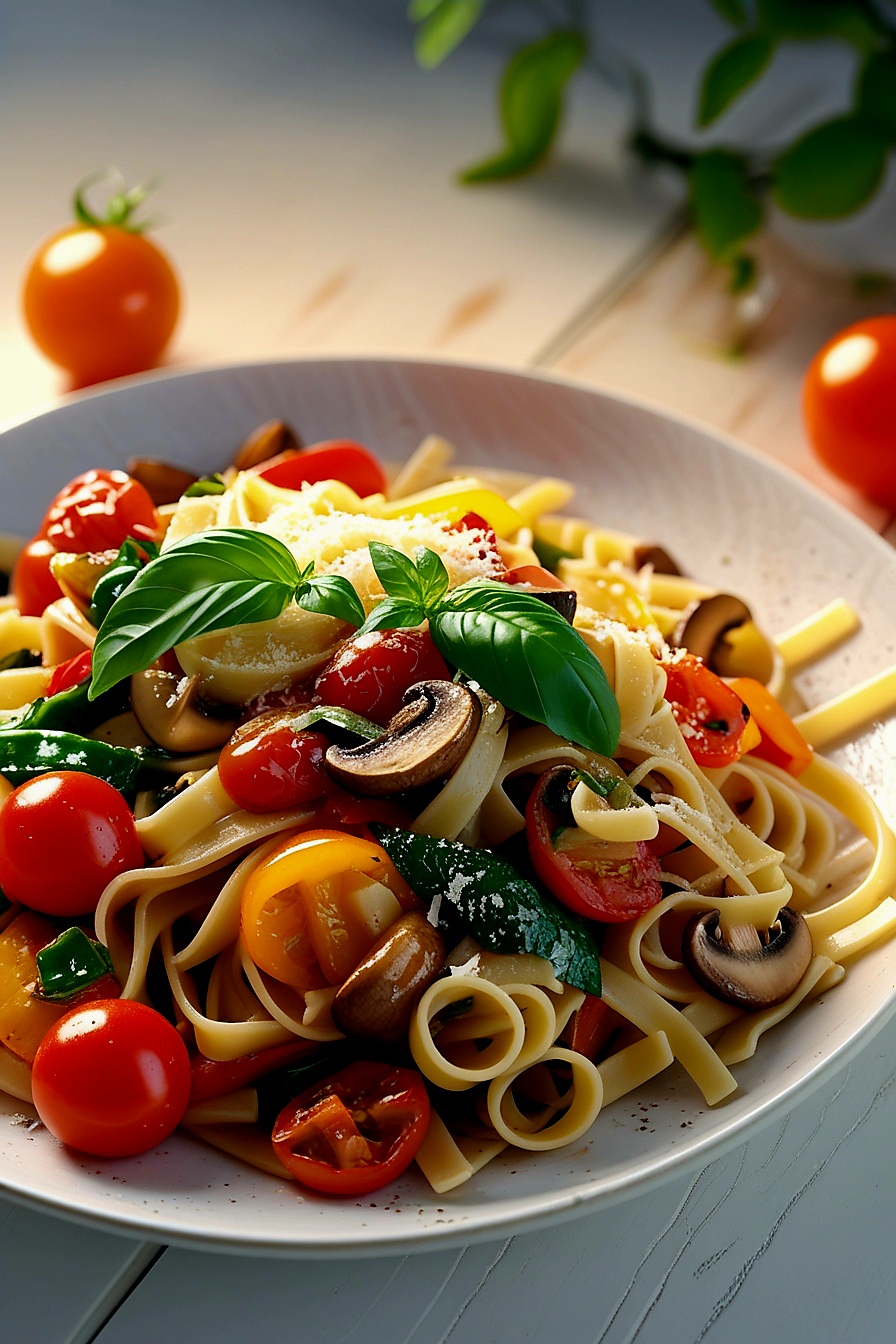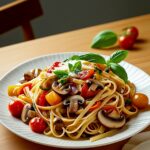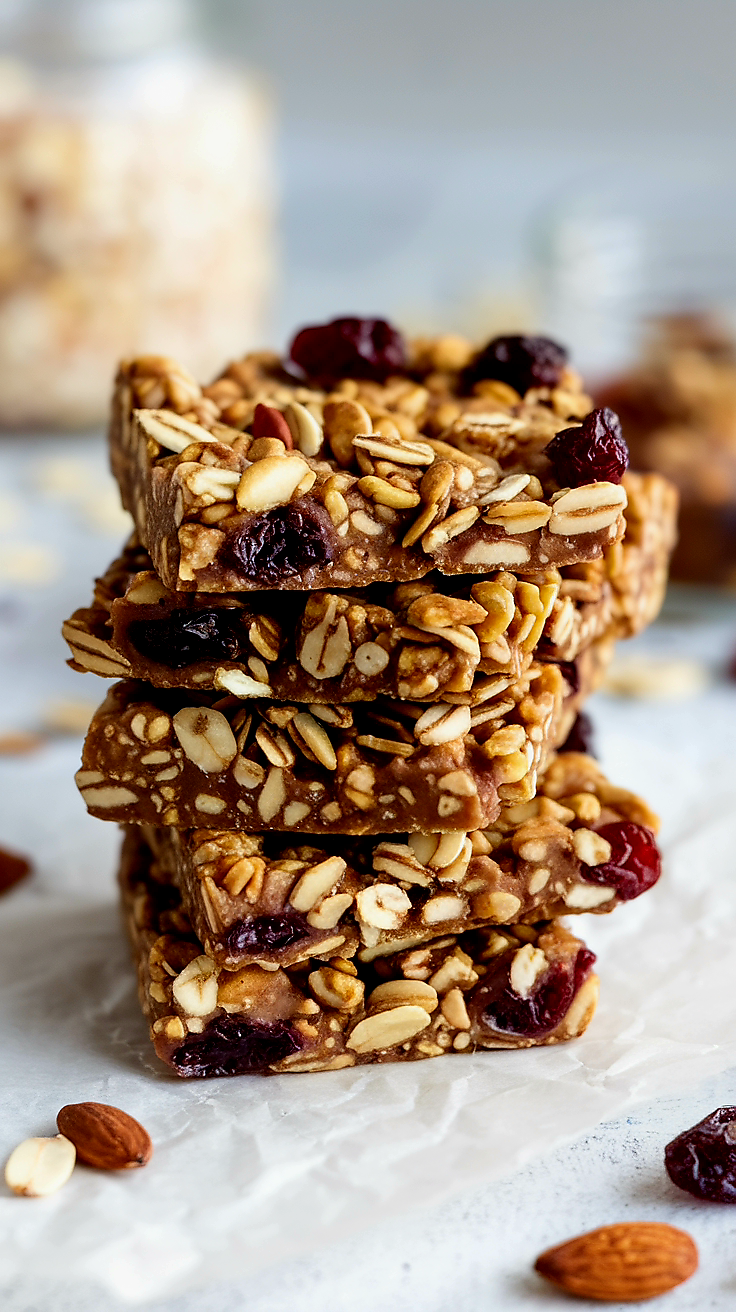Pasta Primavera
If there’s one dish that captures the brightness of spring and the heartiness of comfort food in one bowl, it’s Pasta Primavera. Light, colorful, and bursting with garden-fresh vegetables, this dish is more than just a “healthy choice” — it’s a celebration of flavor and simplicity. Whether you’re a vegetarian or just looking for a refreshing break from heavy sauces, Pasta Primavera is the answer. Plus, it’s easy enough for weeknights and elegant enough to serve at your next dinner party.
In this post, we’ll walk you through what makes Pasta Primavera so special, how to make it with what you already have in your fridge, and tips for customizing it to suit your cravings or dietary needs.
What Is Pasta Primavera?
Despite its name (which means “spring pasta” in Italian), Pasta Primavera actually originated in the U.S. in the 1970s. It quickly became a popular restaurant dish thanks to its colorful presentation and light, veggie-packed profile.
The traditional version features al dente pasta tossed with lightly sautéed vegetables such as zucchini, bell peppers, carrots, and cherry tomatoes — often finished with a simple olive oil or light cream-based sauce. The result? A dish that feels indulgent but remains balanced, fresh, and full of nutrients.
Why You’ll Love This Dish
Quick and Easy: Ready in under 30 minutes.
Customizable: Use whatever vegetables are in season.
Light and Satisfying: Great for lunch or dinner without feeling too heavy.
Meal Prep-Friendly: Stays delicious even the next day.
Tips for the Best Pasta Primavera
If there’s one dish that captures the brightness of spring and the heartiness of comfort food in one bowl, it’s Pasta Primavera. Light, colorful, and bursting with garden-fresh vegetables, this dish is more than just a “healthy choice” — it’s a celebration of flavor and simplicity. Whether you’re a vegetarian or just looking for a refreshing break from heavy sauces, Pasta Primavera is the answer. Plus, it’s easy enough for weeknights and elegant enough to serve at your next dinner party.
In this post, we’ll walk you through what makes Pasta Primavera so special, how to make it with what you already have in your fridge, and tips for customizing it to suit your cravings or dietary needs.
Tips for the Best Pasta Primavera
Don’t overcook the veggies. They should remain slightly crisp for texture.
Cook pasta al dente. It’ll continue cooking a little when tossed with warm vegetables.
Use fresh herbs. A sprinkle of chopped parsley or basil at the end adds a burst of flavor.
Save some pasta water. It helps bind the sauce and brings everything together.
Make It Vegan or Dairy-Free
Want to make this recipe fully plant-based? Just skip the cheese or use a vegan alternative. You can also drizzle a bit of nutritional yeast for a cheesy flavor or finish with a splash of lemon juice for brightness.
Serving Suggestions
Serve your Pasta Primavera with:
A side of garlic bread
A light green salad with vinaigrette
Chilled white wine like Pinot Grigio
Final Thoughts
Pasta Primavera isn’t just a dish — it’s a way to bring color and balance back to your plate. It’s perfect for those transitional days when you’re craving comfort but still want to eat light and fresh. Once you try it, you’ll keep coming back for more — especially since the ingredient possibilities are endless.
Ready to make it? Scroll down to get the full recipe and step-by-step instructions!
Pasta Primavera
Materials
- 8 oz pasta penne, fusilli, or farfalle
- 1 tbsp olive oil
- 2 cloves garlic minced
- 1 zucchini sliced
- 1 yellow squash sliced
- 1 red bell pepper sliced
- 1 cup cherry tomatoes halved
- 1/2 cup broccoli florets
- 1/4 cup red onion sliced
- 1/4 tsp black pepper
- 1/2 tsp salt
- 1/4 tsp crushed red pepper flakes optional
- 1/4 cup grated parmesan cheese optional
- 2 tbsp fresh parsley or basil chopped
- 1/4 cup reserved pasta water optional
Instructions
- Cook pasta in salted water according to package instructions. Drain and set aside, reserving 1/4 cup of the pasta water.
- In a large skillet, heat olive oil over medium heat. Add garlic and sauté for 30 seconds until fragrant.
- Add red onion, bell pepper, zucchini, squash, broccoli, and cherry tomatoes. Cook for 5–6 minutes until slightly tender but still crisp.
- Add cooked pasta to the skillet and toss everything together. If needed, add reserved pasta water to loosen.
- Season with salt, pepper, and red pepper flakes. Sprinkle parmesan if using.
- Garnish with fresh parsley or basil and serve warm.









